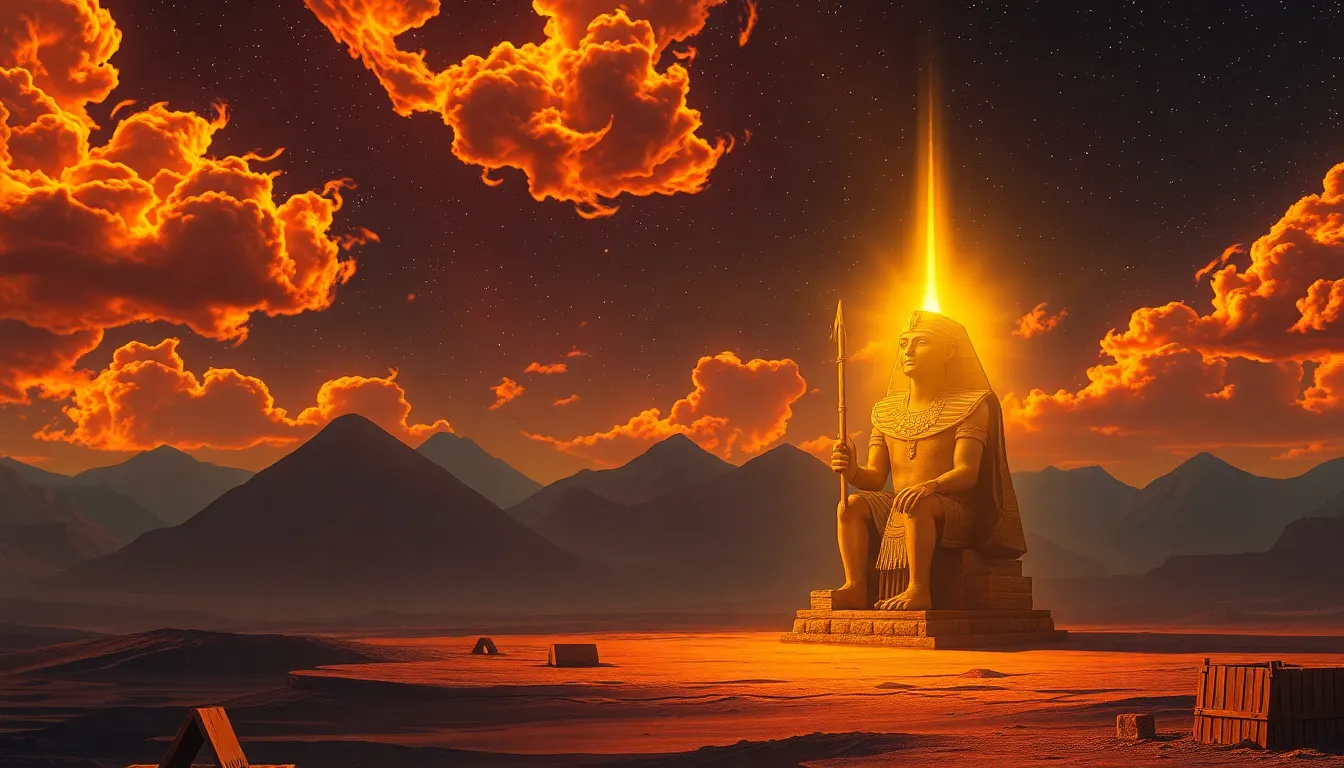The Story of the First Light: Ra and the Origins of Day
I. Introduction
Ra, the ancient Egyptian sun god, holds a prominent place in the mythology of one of the world’s oldest civilizations. His significance extends beyond mere worship; he embodies the very essence of light and day, essential elements for life on Earth. In many ancient cultures, the sun was a symbol of divinity, power, and creation, illuminating the world and sustaining all living beings. This article aims to delve into the fascinating story of Ra and his role in the origins of day, exploring the intricate mythology surrounding this revered deity.
II. The Mythological Context of Ra
Ra is often considered the most important deity in the Egyptian pantheon. He represents the sun and is a symbol of creation, kingship, and light. In Egyptian mythology, Ra is frequently depicted with a falcon head, crowned with a sun disk, which emphasizes his solar connections.
His attributes include:
- Light and illumination
- Creation and birth
- Order and justice
- Life and growth
Ra’s journey across the sky is a central theme in Egyptian mythology, representing the cycle of day and night. Each day, he travels from the eastern horizon, moves across the sky, and descends into the underworld at night, where he battles the forces of chaos before rising again at dawn.
III. The Creation of Light
Before the creation of the world, there existed a vast expanse of chaos and darkness, known as Nun. This primordial void was unformed and devoid of life. From this darkness emerged Ra, the first light, who brought order to the chaos.
The emergence of Ra as the first light symbolizes the triumph of creation over chaos. Light is significant in many creation myths, as it represents knowledge, life, and the divine. Ra’s appearance marked the beginning of time and the establishment of the natural order.
IV. Ra’s Daily Journey
Ra’s daily journey is a vivid depiction of the sun’s movement across the sky. Each morning, Ra rises in the east, bringing light to the world. This moment is celebrated as a symbol of rebirth and renewal.
The symbolism of sunrise and sunset is profound:
- Sunrise: Represents new beginnings, hope, and the rebirth of life.
- Sunset: Symbolizes the end of the day, a time for reflection, and the inevitability of darkness.
During his journey, Ra engages in battles against the forces of darkness, often personified by the serpent Apep (or Apophis). These nightly confrontations represent the eternal struggle between light and dark, order and chaos, emphasizing the importance of Ra in maintaining the balance of the universe.
V. The Connection Between Ra and Time
Ra’s journey across the sky is not only an illustration of the sun’s movement but also a representation of the passage of time. Each cycle of Ra’s journey corresponds to the hours of the day, marking the rhythm of life for the ancient Egyptians.
This cycle had a significant impact on Egyptian calendars, which were closely tied to the solar cycle. The Egyptians developed a calendar based on the lunar and solar cycles, with Ra’s journey providing a framework for agricultural and religious activities.
The relationship between day, night, and the natural world is evident in the way Egyptians structured their lives around Ra’s movements, emphasizing the importance of harmony with nature.
VI. Ra in Egyptian Culture
Ra was widely worshipped throughout ancient Egypt, with numerous temples dedicated to him, the most notable being the Temple of Ra at Heliopolis. These sacred spaces served as centers for worship and religious ceremonies, reinforcing Ra’s significance in Egyptian culture.
Artistic representations of Ra are abundant in Egyptian iconography, often depicting him as a falcon or a man with a falcon’s head, adorned with a sun disk. Ra’s imagery appears in:
- Statues and reliefs
- Hieroglyphics and inscriptions
- Funerary art and tomb paintings
Ra’s influence extends to Egyptian literature and rituals, where he is invoked in prayers, hymns, and during significant rites, showcasing his central role in the spiritual life of the Egyptians.
VII. The Legacy of Ra
Ra’s legacy extends beyond ancient Egypt, influencing later mythologies and religions. Many cultures adopted sun deities with traits reminiscent of Ra, reflecting the universal significance of the sun in human experience.
The impact of Ra on modern interpretations of light and divinity is evident in various philosophical and spiritual contexts. Light is often associated with knowledge, purity, and enlightenment, concepts that resonate with Ra’s symbolism.
Furthermore, the lessons from Ra’s story about the cyclical nature of life, conflict, and the balance between opposing forces remain relevant to contemporary society. They remind us of the importance of resilience, hope, and the quest for harmony.
VIII. Conclusion
In summary, Ra’s significance in the origins of day is profound and multifaceted. As the embodiment of light, he represents creation, order, and the eternal struggle against chaos. The legacy of light continues to permeate human culture, serving as a powerful symbol of hope and renewal.
Understanding the mythology surrounding Ra not only enriches our appreciation of ancient Egyptian culture but also highlights the timeless importance of mythology in making sense of our world. As we look to the sun each day, we are reminded of Ra’s enduring influence and the light he brings to our lives.




